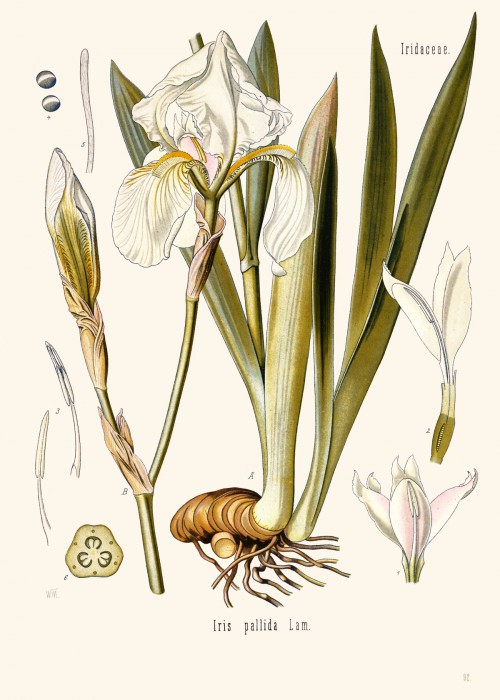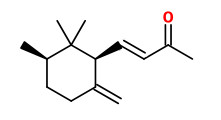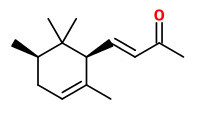Dies ist eine alte Version des Dokuments!
Iris pallida Lam. - Iridaceae - Dalmatian iris, Bleiche Schwertlilie, Dalmatinische Iris
Perennial native to the Dalmatian coast (Croatia), widely naturalized; cultivated as a garden plant, and commercially to produce essential oils from its rhizome.
„The racemates of all irone isomers (cis-α, trans-α, β, cis-γ, trans-γ) have been resolved by chiral capillary gas chromatography and the separated pure enantiomers have been olfactorily characterized by using GC-sniffing techniques. (+)-cis-γ-Irone and (+)-cis-α-irone were found to have the most interesting organoleptic properties.“
Regarding industrially-produced orris oil of I.pallida, (-)-cis-α-irone (61.5%), (-)-cis-γ-irone (37.6%), (+)-trans-α-irone (0.9%), and β-irone (0.7%) were found.
[Direct enantioselective separation and olfactory evaluation of all irone isomers., Galfré, A., Martin, P., Petrzilka, M., Journal of Essential Oil Research, 5(3), 1993, 265-277]
Orris root oil or „orris butter“, produced by steam distillation of the grounded and carefully dried rhizomes, has a buttery nature because of various amounts of methyl and ethyl myristate. The typical odor of the oil (violet, floral, woody) is attributed to the irones, which are structurally related to the ionones. (of violet oil). Main constituents are (+)-cis-α-irone (39%), (-)-trans-α-irone (16%), (+)-β-irone (2%), (+)-cis-γ-irone (43%), with trace amounts of (+)-trans-γ-irone.
[Scent and Chemistry, Günther Ohloff, Wilhelm Pickenhagen, Philip Kraft, Wiley-VCH, 2012, 281-284]

Köhler, F.E., Medizinal Pflanzen, vol.2, t.922 (1890)
http://plantgenera.org/species.php?id_species=558771


